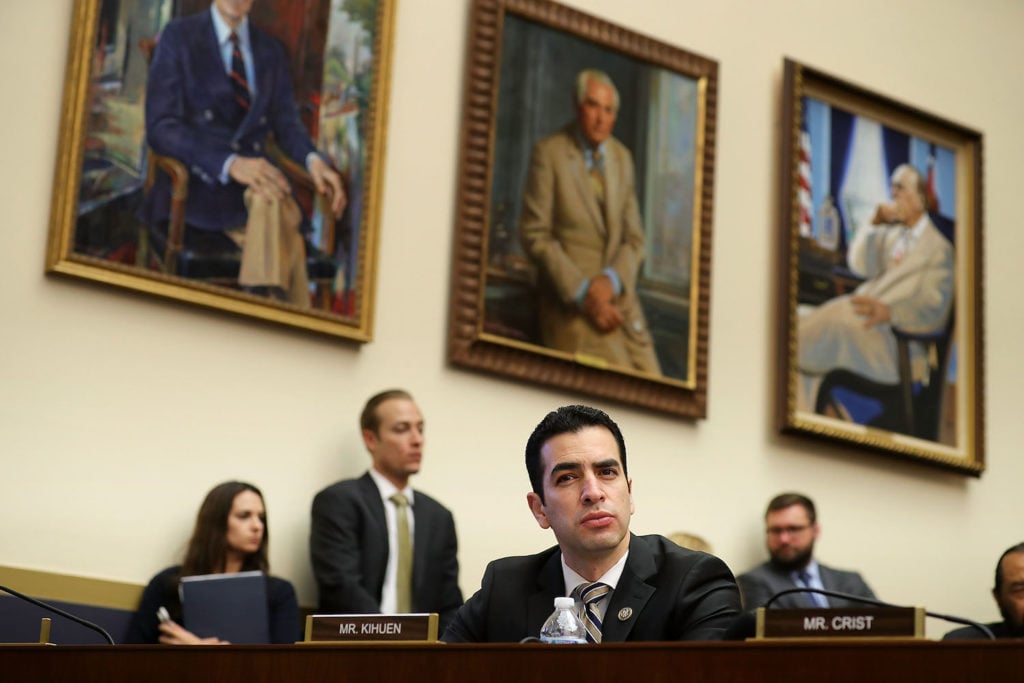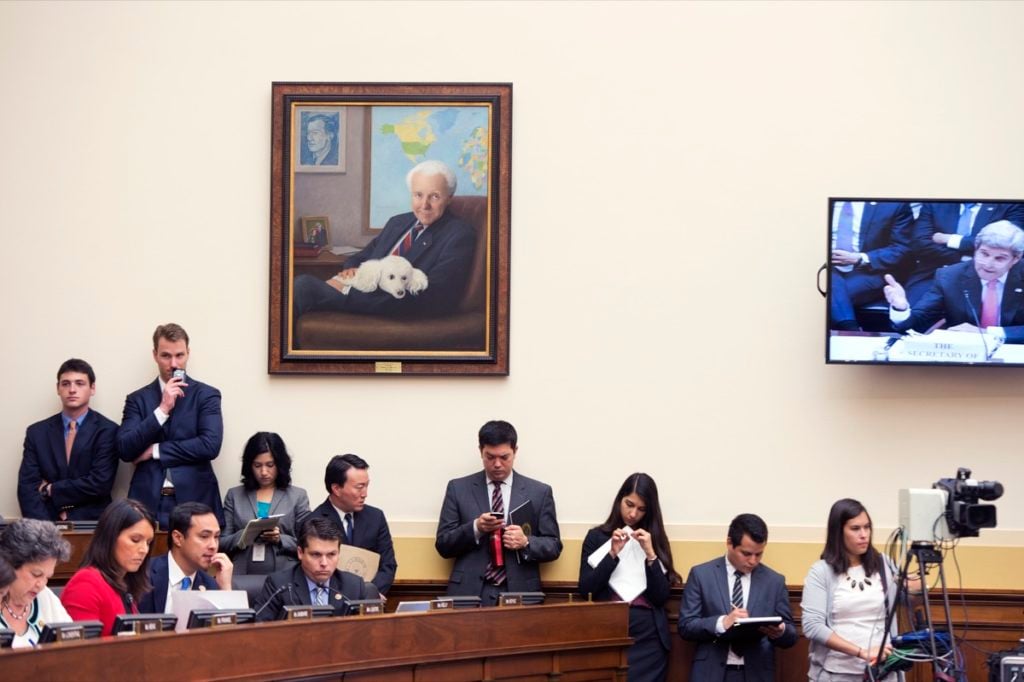Politics
Trump Signs Bill Banning the Government From Funding Oil Paintings of Politicians
Trump has shaved a whopping $500,000 off the federal budget with the new law.

Trump has shaved a whopping $500,000 off the federal budget with the new law.

Sarah Cascone

Official government portraits may soon become a bit less luxurious. President Donald Trump has signed the Eliminating Government-funded Oil-painting Act, also known as the “Ego” Act, into law. No longer can government officials earmark taxpayer dollars for the creation of their official portraits.
The White House issued a statement on Wednesday confirming the signing of S. 188, “which prohibits the use of Federal funds for the costs of painting portraits of officers and employees of the Federal Government.”
But if Trump is looking to make a dent in the ballooning federal deficit, which Forbes put at $1 trillion and rising last month, the Ego Act is not going to do much. The bill will only save about $500,000 a year, according to the Congressional Budget Office. In comparison, the government’s discretionary spending totaled $1.2 trillion in 2017.
Republican senator Bill Cassidy of Louisiana is the man behind the bill, which makes permanent a ban that he had previously included in the 2014 and 2016 federal budgets. Cassidy first introduced the ban in 2013. He was particularly disturbed by the expensive portraits sometimes made for officials who served less than a full term, such as former Department of Commerce secretary John Bryson. After just eight months in office, Bryson used $22,400 in taxpayer money on his official portrait.

Laurel Stern Boeck’s Thomas Peter Lantos (2011), depicting former Foreign Affairs Committee chairman Tom Lantos with his beloved poodle Gigi, can be seen on the wall at a House Foreign Affairs Committee hearing in the Rayburn Building. The painting is part of the collection of the US House of Representatives. Photo courtesy of Tom Williams/CQ Roll Call/Getty Images.
The bill’s sponsors argue that insisting on an oil painting is narcissistic when a photo will serve just as well. “Every dollar the government spends on vanity projects for federal officials is a dollar that is not spent improving the lives of hardworking Americans,” said the bill’s Democratic sponsor in the House of Representatives, Matt Cartwright of Pennsylvania, in a statement. “It’s just wrong to spend taxpayer dollars on portraits the public will never see.”
But while photographs might do the trick to capture a politician’s likeness, some maintain that an official portrait in oil paint creates a longer-lasting historical record. Three of the most influential political leaders of the 19th century—Henry Clay, Daniel Webster, and John C. Calhoun—are immortalized in the Senate by portraits the government purchased in 1881 for $4,000 from the collection of Civil War photographer Matthew Brady. (Even Brady, a world-famous photographer, appreciated a good oil painting.)
Despite the new rule, the practice of official portraits will likely continue, but with other sources of funding. The recently unveiled official portraits of former President Barack Obama and First Lady Michelle Obama, currently drawing massive crowds at the Smithsonian’s National Portrait Gallery in Washington, DC, were funded entirely by private donors. The works by Kehinde Wiley and Amy Sherald, the first African American artists to paint official presidential portraits, were commissioned for $500,000.